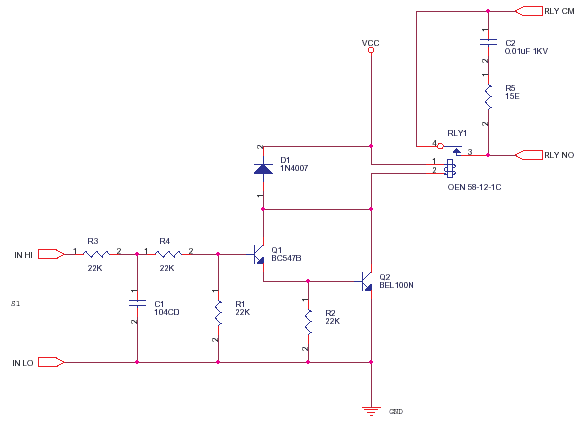Basic Relay or Solenoid Driver
This circuit is a standard way of driving Small Power Relays
from Control Signals generated by Logic or Opamp Circuits.
Instrumentation
and Automation - 02
C2 and R5 form a snubber which improves the life of the metal
contacts, the contacts can erode due to sparking when
switching inductive or even big loads. reduces EMI_RFI.
Types
of Switches in Electronics
The Electromagnetic Solenoid Coil is rated by Volts and Ohms.
If you choose 12V ensure a stable 12V is provided, more
voltage will heat coil, less voltage will cause sparking or
will drop out the magnetic holding.
A high coil resistance is better as the heat will be less and
power consumption of your design is low.

Three Phase AC SSR for 1 HP Motor
Chattering and Sparking
R2 and R1 is to hold the bases to ground and avoid floating or else they will pick up noise and relay will chatter..... the contacts will spark ....... the motor or heater will fail to work well......... and your product will get rejected ........... the payments will be held up ...... the customer may even ........................... stop that right now !
Types of Relays

When huge loads are switched on-off in a factory, lots of spikes and drop outs will reset timer and logic circuits, this will turn on off above relay ... leading to the load switched by this circuit going on-off. This may even lead to a Oscillation with the spikes as feedback which can cause great trouble during the troubleshooting process. R4 limits current.
...
...
...
...
...
delabs Technologies
20th May 2020
...
The documents, software, tools and links are provided to enhance the ability of an electronics student, hobbyist or professional by sharing information. The information, links etc. should be used by the website visitor, at his or her own risk and responsibility. There may be concept, design and link errors in the pages.
Creative Work, ideas and documents of delabs can be used for Product Design and Development by R&D Engineers, Hobbyists, Students and even firms for creating useful products. These cannot be used for reprint, replication or publishing online or offline.

